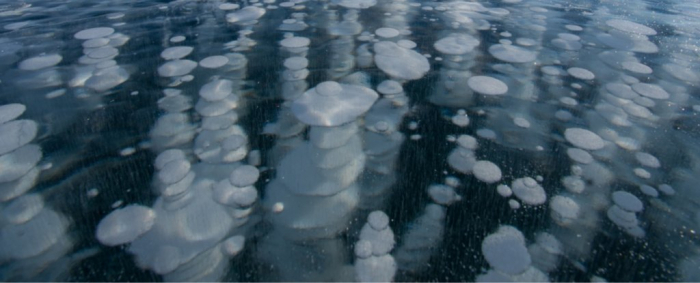We thought we had a rough idea of how this worked, but a new observation has now thrown a team of researchers for a serious loop.
One particular type of amorphous ice was first discovered in the 1980s: it forms when we freeze water into ice at extreme temperatures, and put that ice under a tremendous amount of pressure. It was assumed the resulting amorphous structure was related to liquid water – as in, you could freeze water into amorphous ice and 'melt' it back again – but scientists are not so sure any more.
In an attempt to study high-density amorphous ice, scientists at the Oak Ridge National Laboratory instead accidentally created a succession of forms of crystalline ice, instead.
"If the data from our experiment was true," said materials scientist Dennis Klug of the National Research Council of Canada, "it would mean that amorphous ice is not related to liquid water but is rather an interrupted transformation between two crystalline phases, a major departure from widely accepted theory."
Record scratch.
So what actually happened? The team was planning on studying changes in amorphous ice as its temperature rises. It was expected that the disordered molecules would assemble back into an ordered lattice structure as the amorphous ice 'melted' back into a crystalline form.
But first they had to produce the amorphous ice. They froze a three-millimetre sphere of heavy water, which has an extra neutron in the hydrogen nucleus; this handy feature enables neutron scattering analysis.
They then brought the temperature of the sphere down to 100.15 Kelvin (-173 degrees Celsius), while gradually raising the pressure to around 28,000 times Earth's atmospheric pressure at sea level.
But when they started to look at the molecular structure, they found that the ice had sequentially transformed through four crystalline forms. It started at ice Ih - that's normal ice, with a hexagonal structure - and moved through ice IX and ice XV, before ending up at ice XIII.
"I've made many of these samples always by compressing ice at low temperature," Klug said. "I've never previously seen this pressure-temperature path result in a series of crystalline forms like this."
The team's first thought was that the water sample was contaminated. So they did it again, with a fresh sample. And again, with another fresh sample. And again, one more time.
Every time, they saw the same thing. Ice Ih, ice IX, ice XV and ice XIII, without even a hint of amorphous ice.
So the research team looked to the experiment itself - and found an answer. By only increasing pressure slowly, and collecting data at a lower pressure point, the team had done something previous research hadn't achieved before.
That slower pressure increase allowed the ice structure to relax and order itself into ice IX, rather than skipping straight past it. And the data collection allowed them to find it.
So this is pretty neat, but it does present some problems - and not just the aforementioned liquid water association.
The phase transition between low-density water and high-density water is thought to occur at what is called the second critical point. This could explain some of the strange behaviour of supercooled water, and scientists have been looking for it, somewhere between the crystalline phases.
Except, as this research shows, "the second critical point may not even exist," said materials scientist Chris Tulk of the Oak Ridge National Laboratory.
This is actually pretty exciting. It's given scientists something new and unexpected to chew over - something that could actually change the way we understand the dynamics of weird and wonderful water.
More about:
















































